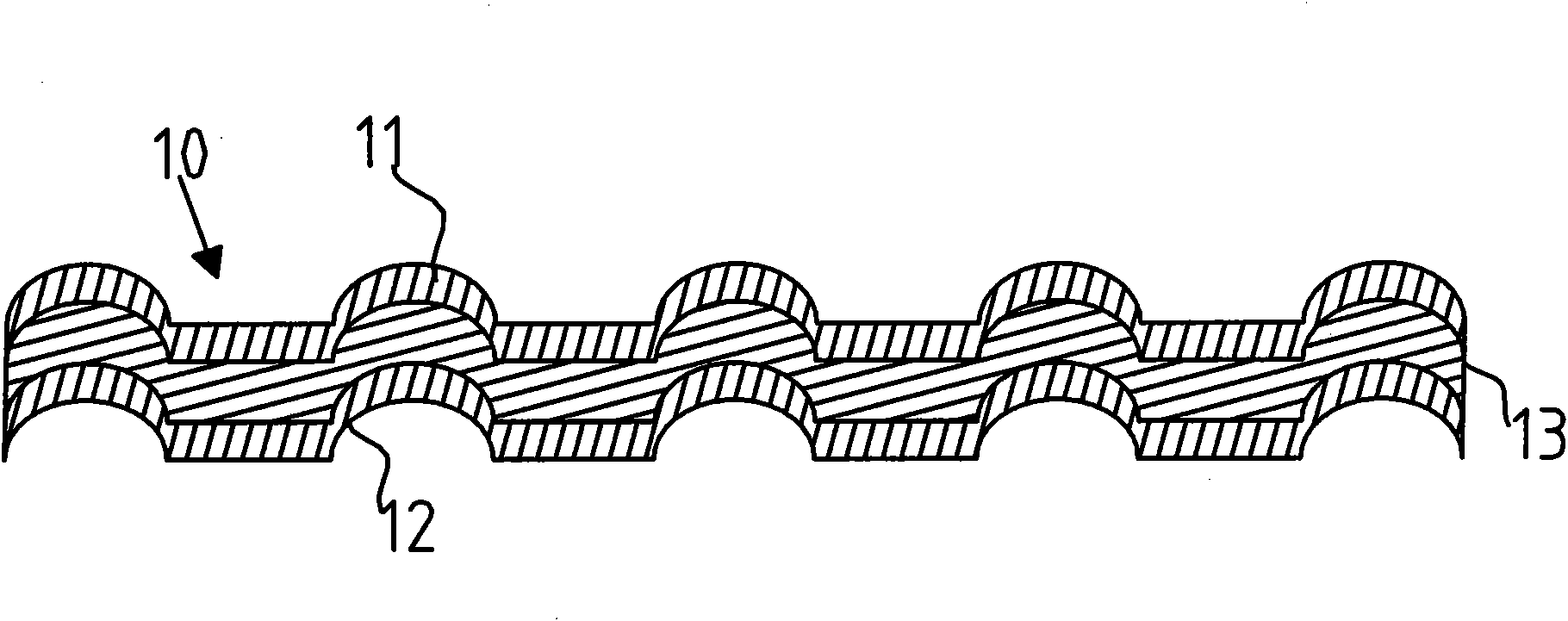Three-layer resin glazed tile
A technology of glazed tiles and resins, which is applied to roof coverings, roofs, and roofs using flat/curved panels, etc., which can solve problems such as short service life, poor sound attenuation and heat insulation, and poor impact resistance
- Summary
- Abstract
- Description
- Claims
- Application Information
AI Technical Summary
Problems solved by technology
Method used
Image
Examples
preparation example Construction
[0019] The preparation method of three-layer resin glazed tile of the present invention comprises the following steps:
[0020] a. Mix the prepared intermediate layer raw materials and bottom layer raw materials in a high-speed mixer for 10-15 minutes, and then granulate them in an extruder at a temperature of 170-200°C; dry the surface layer raw materials at 60-90°C deal with;
[0021] b. Plasticize the above-mentioned intermediate layer pellets and bottom layer pellets at a temperature of 180-210°C;
[0022] c. Extrude the above-mentioned dry surface layer raw materials, plasticized middle layer raw materials and bottom layer raw materials through three co-extruders at 180-200 ° C, and overlap the extruded surface layer, middle layer and bottom layer, and simultaneously pass through the traction Device traction and molding machine pressing can be done.
Embodiment 1
[0025] a. After mixing 60% polyvinyl chloride resin, 15% impact modifier, 5% lubricant and 20% processing aid in the middle layer of raw materials in a high-speed mixer for 10 minutes, the temperature is 170 ° C. Granulating in the machine;
[0026] 70% polyvinyl chloride resin, 10% impact modifier, 5% lubricant, and 15% processing aids are mixed in a high-speed mixer for 10 minutes, and the temperature is 170 ° C in an extruder Carry out granulation; dry the surface material modified resin at 60°C;
[0027] The impact modifier is chlorinated polyethylene; the lubricant is oxidized polyethylene wax; the processing aid is a mixture of ACR, composite stabilizer and pigment;
[0028] The processing aid is ACR (Acrylic copolymer), which is an acrylic ester copolymer with a core-shell structure, and is a processing aid with excellent comprehensive performance.
[0029] b. Plasticize the above-mentioned intermediate layer pellets and bottom layer pellets at a temperature of 180°C;...
Embodiment 2
[0032] a. After mixing 70% polyvinyl chloride resin, 10% impact modifier, 3% lubricant and 17% processing aid in the middle layer of raw materials in a high-speed mixer for 12 minutes, the temperature is 190 ° C. Granulating in the machine;
[0033] 80% polyvinyl chloride resin, 8% impact modifier, 2% lubricant, and 10% processing aid are mixed in a high-speed mixer for 13 minutes, and the temperature is 180 ° C in an extruder Carry out granulation; dry the surface material modified resin at 70°C;
[0034] The impact modifier is chlorinated polyethylene; the lubricant is a mixture of oxidized polyethylene wax, stearic acid and paraffin; the processing aid is a mixture of ACR, calcium carbonate and pigments ;
[0035] b. Plasticize the above-mentioned intermediate layer pellets and bottom layer pellets at a temperature of 200°C;
[0036] c. Extrude the above-mentioned dry surface layer raw materials, plasticized middle layer raw materials and bottom layer raw materials throu...
PUM
| Property | Measurement | Unit |
|---|---|---|
| thickness | aaaaa | aaaaa |
| thickness | aaaaa | aaaaa |
Abstract
Description
Claims
Application Information
 Login to View More
Login to View More - R&D
- Intellectual Property
- Life Sciences
- Materials
- Tech Scout
- Unparalleled Data Quality
- Higher Quality Content
- 60% Fewer Hallucinations
Browse by: Latest US Patents, China's latest patents, Technical Efficacy Thesaurus, Application Domain, Technology Topic, Popular Technical Reports.
© 2025 PatSnap. All rights reserved.Legal|Privacy policy|Modern Slavery Act Transparency Statement|Sitemap|About US| Contact US: help@patsnap.com


